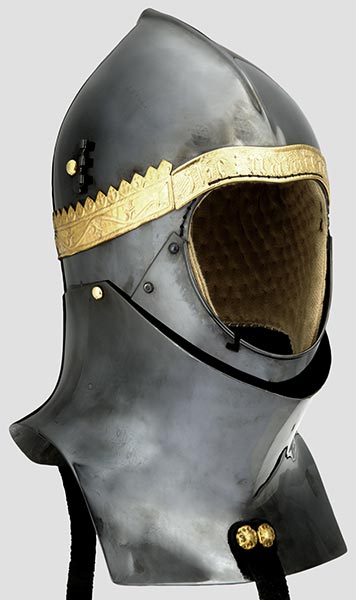I will chime in, as I recently refinished a few parts on a Mauser 98 with chemical blue. In my case, I used Brownells Oxpho-Blue:
https://www.brownells.com/gunsmith-tools-supplies/metal-prep-coloring/metal-bluing/liquid-cold-bluing-chemicals/32-oz-oxpho-blue-cold-bluing-sku082024032-1072-111988.aspx
...In general, the more finely finished a surface is, the better the results of bluing. Deep, abrasive
polishing after the fact will remove the surface oxidization, and thus the color. Changing the color with heat is a tricky operation, and how deep the color can go is beyond my pay grade. However, one can still "polish" a surface without removing the color, as long as you are in fact NOT gouging the surface. As someone noted before, oiling can do this, and oil in fact is what adds most of the color to a surface treatment after a surface has been oxidized!
For instance, both chemical bluing and Parkerizing do not necessarily produce an initially deep color by themselves. The initial oiling is what will color the parts and fill in the voids of the oxide layer, or whatever type of surface layer is created by the chemical process. So, as long as this surface is maintained rather than ablated, you can in fact polish it by oiling and waxing. I don't think maintainers back in the day would have been offended to wax the surface to both shine and protect metal!
Another thing to note about bluing is that, while a more finely finished surface is preferable, it's not always essential for a respectable finish. A few of the said Mauser's barrel bands had some old rust spots on them. I didn't want to damage any actual heat bluing, so I simply maintained the parts by first cleaning them with acetone, hot soapy water (with drying), and a second acetone wash. Bluing was done per the instructions for my chemical - apply, steel wool the surface, and repeat. After several cycles of this on the various parts I treated, the surface of the barrel band was not super dark, and some areas, especially the red rust spots, were still notable. However, after applying a penetrating oil (WD40), the surface effectively turned to a uniform glossy black. After a few more passes with various oils, I finished up with Gunstock Wax (sorry if you're in California with that one...) to seal the surface (I probably made another pass with oil just for good measure as well). Needless to say, flaws might still be detectable on a blued surface, but they're a lot harder to identify.
I imagine bluing was very popular for several reasons. The initial chemical process will provide a small measure of chemical resistance, but not a huge amount. Instead, it is the oils the surface layer holds that do most of the work. If you can maintain that surface treatment, you now have a very respectably corrosion-resistant armor that can hide a fairly broad range of cosmetic flaws, while also looking all the better for having color or contrast. In comparison, an armor in the white has none of these advantages, aside from appearance preferences. Or, perhaps as another recent thread suggests, a polished armor in the white on a sunny day would make one hard to look at...
